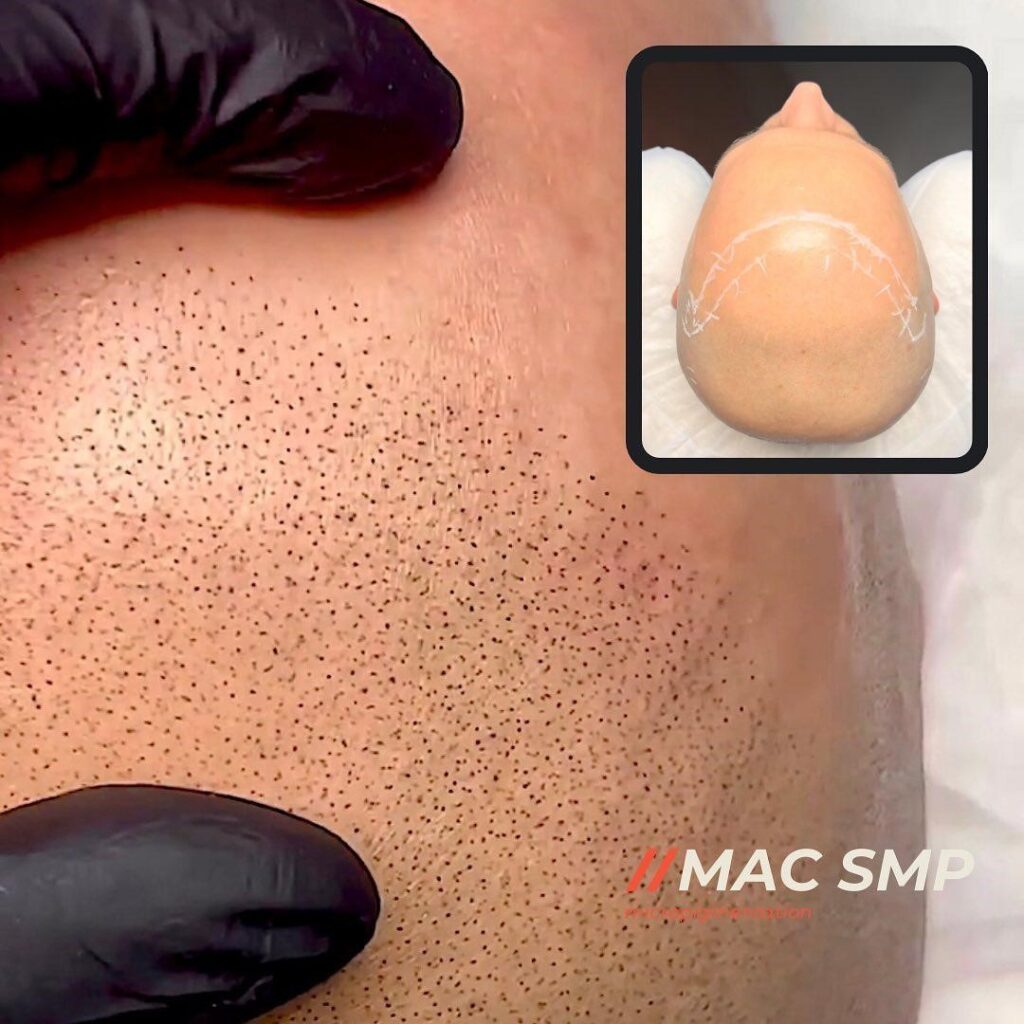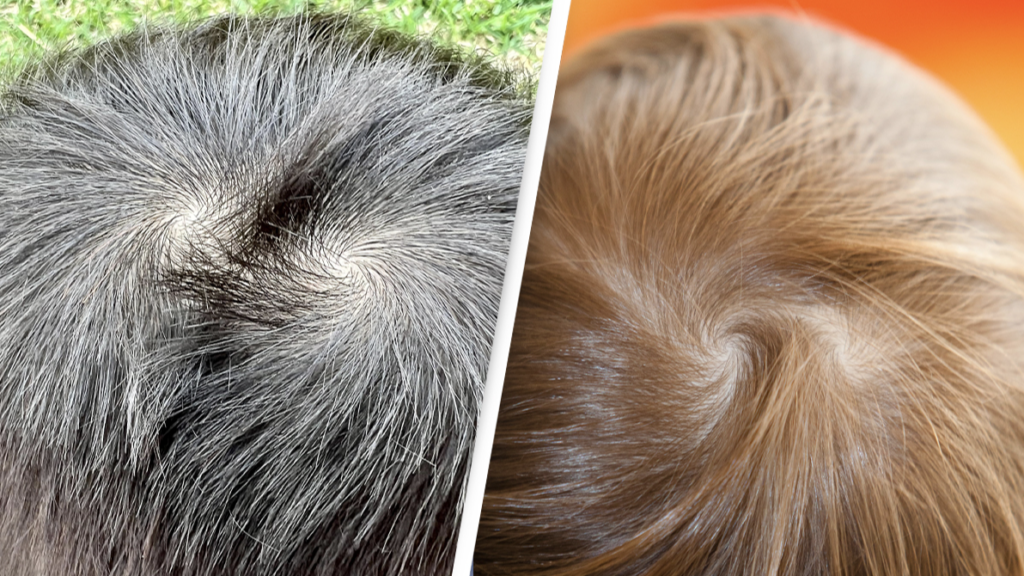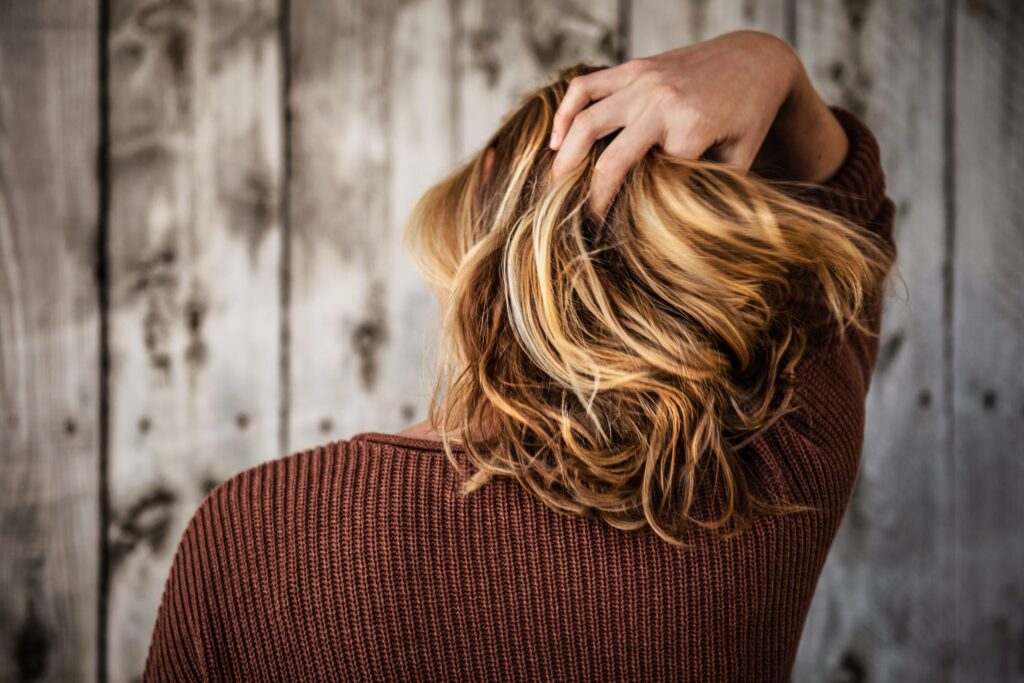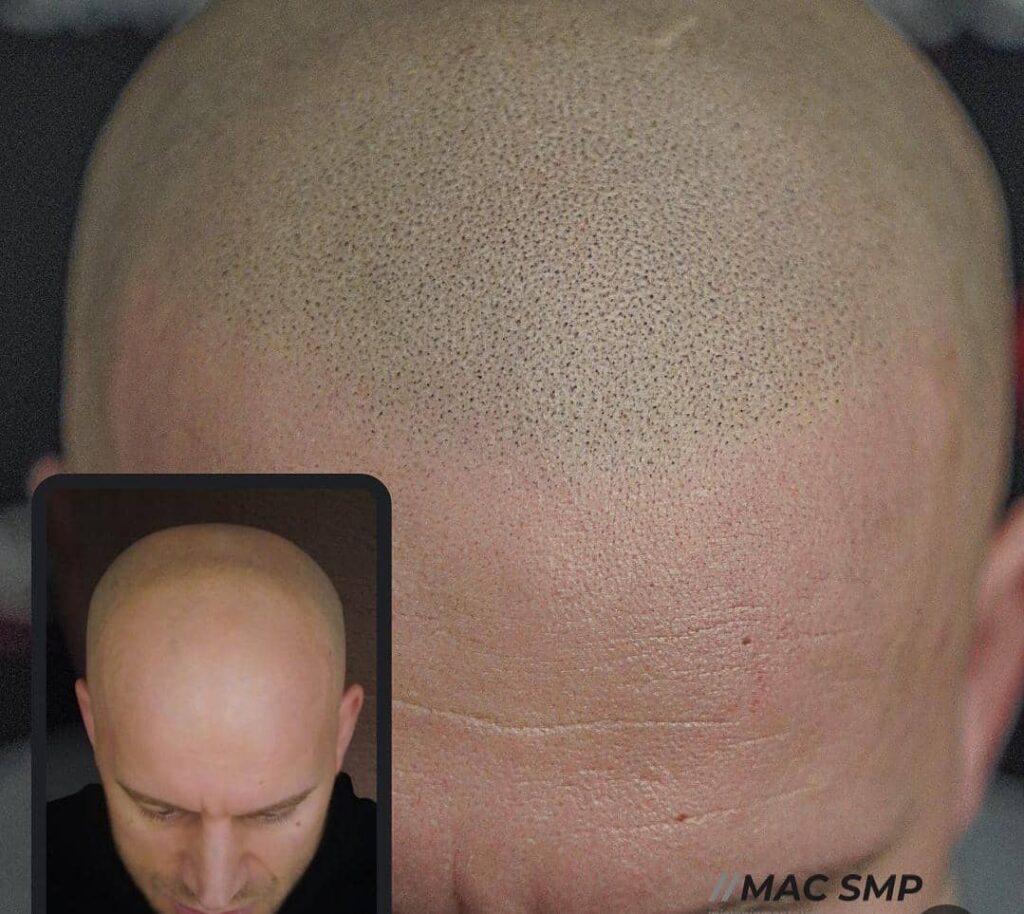Are you tired of dealing with hair loss or thinning hair? Do you wish there was a way to restore your confidence and regain a full head of hair? Look no further! This comprehensive guide will explore the world of SMP (Scalp Micropigmentation) hair tattoos and why Mac SMP in NYC is the best place to trust with your hair restoration needs.
SMP hair tattoo is a revolutionary technique that uses tiny pigments to replicate the appearance of hair follicles on the scalp. It is a non-invasive and non-surgical procedure that provides a natural-looking solution for hair loss. Whether you are new to the concept of SMP or have some experience with it, this guide will provide valuable insights and information.
Key Takeaway
SMP Hair Tattoo offers a natural solution to hair loss, and Mac SMP in NYC is the ultimate destination for exceptional results.
With personalized care, cutting-edge expertise, and a commitment to your transformation, Mac SMP empowers you to rediscover confidence and embrace a revitalized appearance.
Be informed about potential side effects and aftercare to make an empowered decision. Book your consultation today and embark on a journey toward a renewed sense of self with SMP Hair Tattoo at Mac SMP.
The Basics of SMP Hair Tattoo
Individuals facing male pattern baldness often explore various options in search of a comprehensive hair loss solution. Hair transplantation surgery emerges as a prominent choice for those seeking a long-lasting remedy. This procedure involves moving hair from areas with fuller hair growth to the thinning or balding areas, thus addressing the concerns of male pattern baldness. Another innovative approach that has gained popularity is scalp micropigmentation (SMP) treatment, a technique akin to traditional tattooing.
Unlike conventional tattoo needles, SMP utilizes specialized equipment designed to mimic the appearance of hair follicles, creating an illusion of fuller hair density on the scalp. This procedure is particularly beneficial for individuals who prefer a buzz cut or have limited existing hair to work with. The process is carried out in a sterile environment to ensure safety and precision, similar to the standards maintained in permanent makeup applications.
Combining the benefits of both SMP and hair transplant procedures can yield remarkable outcomes for those striving to overcome hair loss challenges. Whether it’s the artistic touch of SMP replicating the look of hair follicles or the surgical finesse of hair transplantation surgery, individuals now have a range of options to regain the appearance of fuller hair and combat male pattern baldness effectively.
Before we dive into why Mac SMP in NYC is the go-to destination for SMP hair tattoos, let’s understand the basics of this procedure.
● What is SMP Hair Tattoo?
SMP hair tattoo, also known as scalp micropigmentation, is a specialized cosmetic procedure that involves the application of microneedles to deposit pigment onto the scalp.
The process creates the illusion of a full head of hair by replicating the appearance of hair follicles. This technique is suitable for both men and women with various types and stages of hair loss.
● How Does SMP Hair Tattoo Work?
Highly skilled technicians use state-of-the-art equipment to apply tiny pigment deposits to the scalp during an SMP hair tattoo session. The pigments are color-matched to your natural hair color, providing a seamless and natural-looking result. The process is painless and requires little to no downtime.
● How Long Do SMP Hair Tattoos Last?
SMP hair tattoo is considered a semi-permanent solution for hair loss. The longevity of SMP hair tattoos varies from person to person and depends on several factors, including the individual’s skin type, lifestyle, and exposure to the sun.
On average, SMP hair tattoos can last between three to five years before requiring a touch-up. However, with proper care and maintenance, some clients have reported their SMP hair tattoos lasting up to eight years. Regular touch-up sessions are recommended to maintain the desired appearance.

Benefits of SMP Hair Tattoo
SMP hair tattoo offers several benefits for individuals struggling with hair loss. Firstly, it provides an immediate solution to the problem, allowing individuals to regain their confidence and self-esteem.
Unlike other hair loss treatments, SMP hair tattoo does not require any downtime or recovery period, meaning that individuals can resume their normal activities immediately after the procedure.
Another advantage of SMP hair tattoo is its versatility. It can address various types and stages of hair loss, including receding hairlines, thinning hair, and complete baldness.
An SMP hair tattoo is a long-lasting solution, as the pigments are designed to fade gradually over time, ensuring a natural-looking result.
Navigating Potential Side Effects of SMP Hair Tattoo: What You Need to Know
Embarking on the transformative journey of SMP Hair Tattoo opens the door to revitalized confidence and restored aesthetics.
While SMP hair tattoo is widely regarded as a safe and minimally invasive procedure, it’s important to comprehensively understand potential side effects before taking the plunge.
Like any cosmetic procedure, SMP Hair Tattoo carries a small risk, and being informed empowers you to make the best decision for your unique situation.
● Mild Redness and Swelling: A Temporary Aftermath
Following your SMP Hair Tattoo procedure, it’s not uncommon to experience mild redness and swelling in the treated areas. This temporary aftermath is your body’s natural response to the pigments introduced to your scalp.
Rest assured, these effects are typically short-lived and tend to subside within a few days. They are a testament to your body’s healing process and a small trade-off for the long-lasting benefits that await.
● Allergic Reactions: A Rare Concern
In rare cases, some individuals may develop an allergic reaction to the pigments used in the SMP Hair Tattoo procedure. While such instances are uncommon, it’s important to be vigilant and attentive to any unusual symptoms.
If you notice persistent itching, rash, or other signs of an allergic reaction, promptly contact your SMP artist or medical professional. Remember, the chances of experiencing an allergic reaction are minimal, but awareness is key.
● Prioritize Aftercare for Optimal Results
To mitigate the risk of complications and ensure a smooth healing process, adhering to the aftercare instructions provided by your SMP artist is paramount. These guidelines are designed to safeguard your investment and promote the longevity of your SMP Hair Tattoo.
Following these steps diligently, you can significantly reduce the likelihood of encountering any adverse effects and enjoy the full spectrum of benefits SMP Hair Tattoo offers.
Why Choose MacSMP in NYC?
Now that we have covered the basics of an SMP hair tattoo let’s explore why Mac SMP is the top choice for those seeking the best SMP experience in NYC.
1. Expertise and Experience
At Mac SMP, we pride ourselves on having a team of highly skilled technicians with extensive experience in SMP hair tattoos. Our technicians undergo rigorous training and stay up-to-date with the latest techniques and advancements in the industry. With their expertise, you can trust that you are in good hands.
2. Cutting-Edge Technology
We understand the importance of using the latest technology and equipment to achieve the best possible results. We utilize state-of-the-art equipment that ensures precision and accuracy during the SMP procedure. Our commitment to using the best tools available sets us apart from the competition.
3. Personalized Approach
We believe every client is unique and deserves a customized approach to their SMP hair tattoo. Our team at MacSMP takes the time to listen to your concerns, goals, and expectations. We work closely with each client to create a personalized treatment plan that suits their needs and preferences.
4. Outstanding Results
When it comes to SMP hair tattoos, the results speak for themselves. We have a track record of delivering exceptional outcomes for our clients. Our goal is to provide you with a natural-looking hairline and boost confidence. Feel free to browse our before and after photos to see the transformative power of SMP.
5. Exceptional Customer Care
We understand that going through any cosmetic procedure can be a significant decision. That’s why we prioritize exceptional customer care at Mac SMP. We strive to create a comfortable and welcoming environment for our clients, ensuring they feel supported throughout their SMP journey. From the initial consultation to the post-treatment follow-up, we are here for you every step of the way.

How to Book an Appointment with Mac SMP
Booking an appointment with us at Mac SMP is a straightforward process. Interested individuals can visit our website or contact us directly to schedule a consultation.
During the consultation, Mac SMP will assess the individual’s hair loss pattern, discuss their goals, and provide a customized treatment plan. From there, the SMP hair tattoo sessions can be scheduled conveniently.
Conclusion
If you’re seeking a cutting-edge solution for hair loss, an SMP hair tattoo is the way to go. And when it comes to SMP in NYC, Mac SMP stands out as the best in the business. With our expertise, state-of-the-art technology, personalized approach, exceptional results, and outstanding customer care, we are the ultimate destination for SMP hair tattoos.
Don’t let hair loss hold you back any longer. Take the plunge and experience the transformative power of SMP at Mac SMP. Book your consultation today and discover a new confidence level with a natural-looking hairline. Trust our experts to help you reclaim your identity and embrace a life filled with self-assurance.






